Functions & Facilities
Special functions and facilities for research in the special environment of ice-covered waters
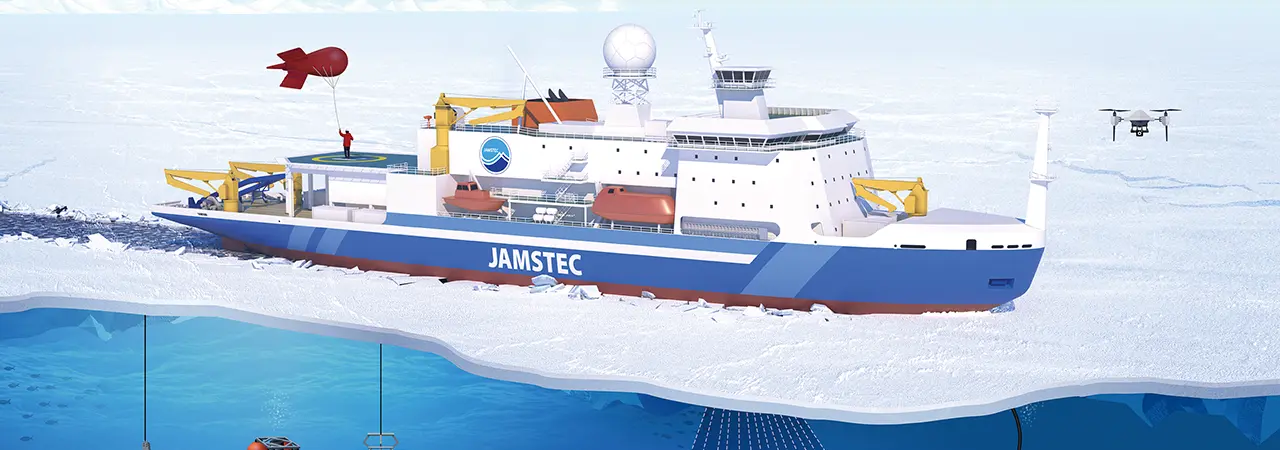
button:Hover the mouse pointer over the button and click to see the functions and facilities.
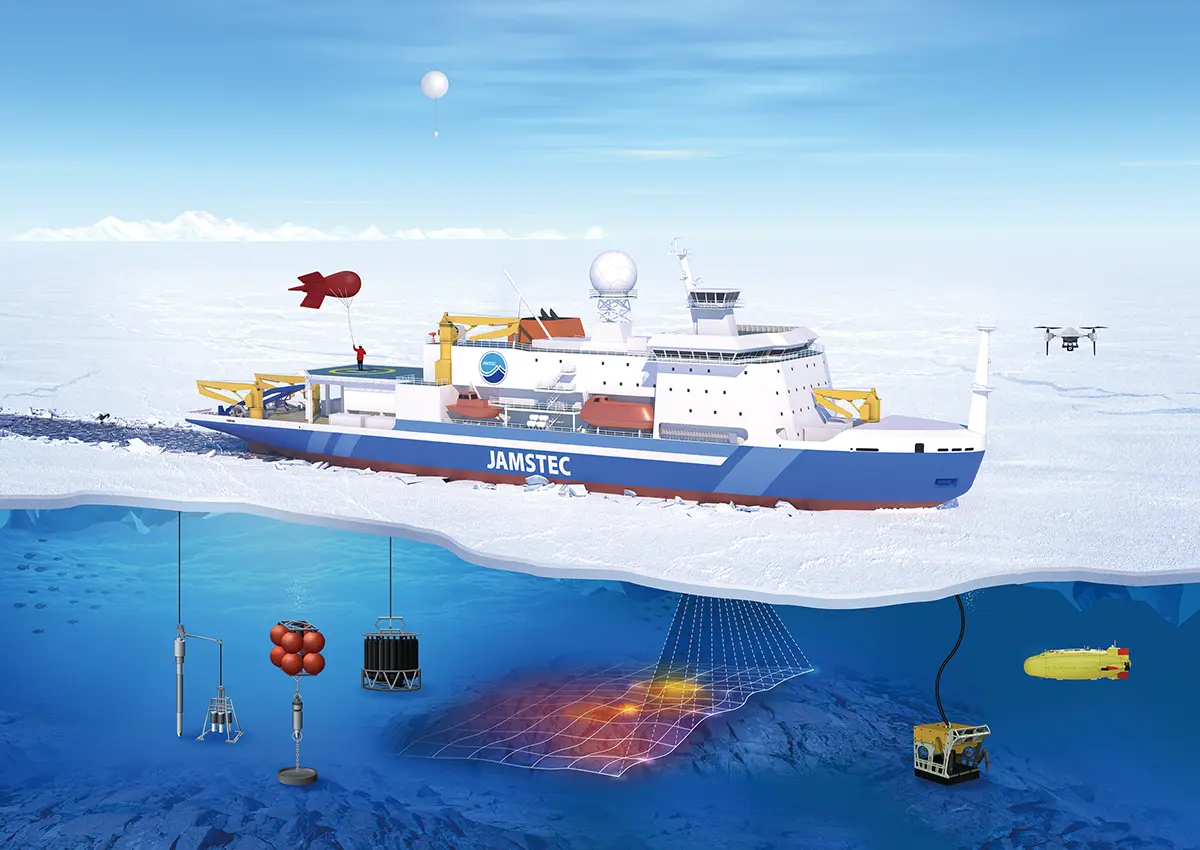

Weather balloon carrying atmospheric instruments
Measure atmospheric variables such as air pressure, temperature, and humidity.
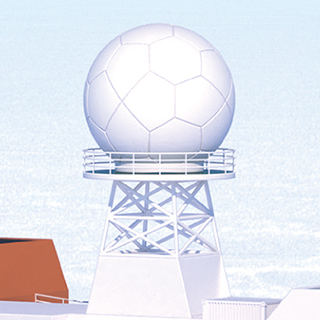
Rainfall/snowfall observations using a meteorological radar system
Measure weather variables over the Arctic Ocean such as the wind speed, speed and size of raindrops and snowflakes inside clouds by doppler radar.
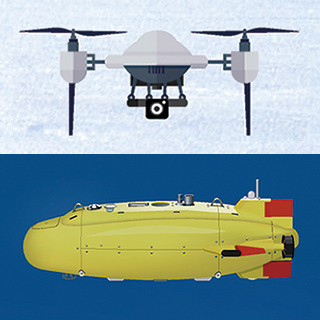
Sea-ice observation via autonomous on-ice and under-ice vehicles
Non-destructive observation above and below the sea ice to:
- Measure ice thickness and floe shape, and
- Observe the marine environment under the ice.
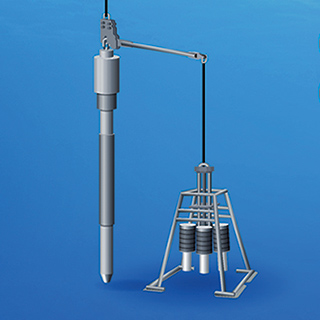
Piston corer
Collect seafloor sediment cores without disrupting the sediment layers.
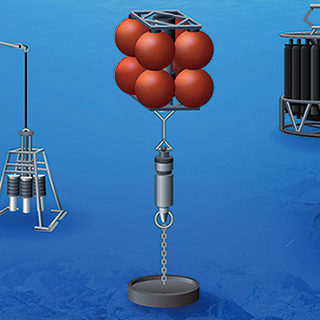
Moorings, for fixed-point observations
Maintain JAMSTEC’s instrumented moorings, which monitor physical and biological changes in the Arctic Ocean.
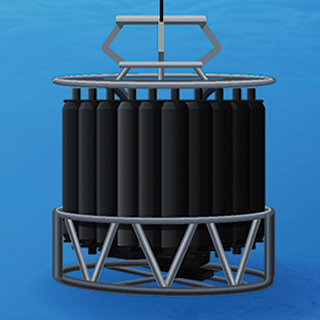
Deep sea water sampler
Measure variables such as temperature, salinity, and pressure in the deep sea, which allow better characterization of the ongoing changes in the Arctic Ocean.
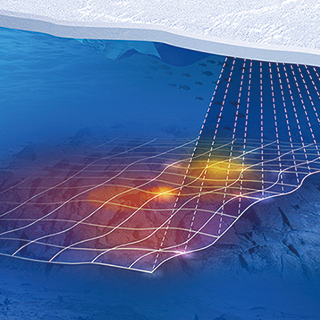
Echo sounder surveys
Surveys of bathymetry and biological resources via echo sounders in the Arctic Ocean.
Hull and superstructure monitoring of the ship
Collect data on the ships’ ice load continued safe operations and maintenance.
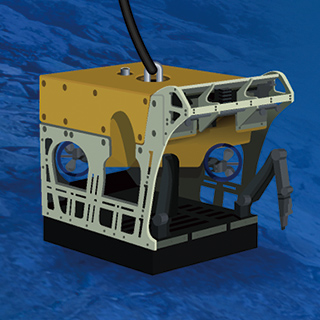
Seafloor surveys via ROV/AUV
Underwater data and sample collection via autonomous underwater vehicles.
Helicopter operations
Helicopters have become “standard equipment” for observations, research, and safety operations in the distant Arctic.
Moon Pool
The vessel will be equipped with a special facility called a “Moon Pool” inside the vessel along the centerline. The Moon Pool is an opening to the ocean, protected from the elements, through which observational and sampling tools and operations can be deployed and conducted. Tools such as the CTD water sampling system can be deployed in icy waters protected from the effects of sea ice outside the ship.
Innovations to Reduce Environmental Impact
Dual-fuel diesel generator (DFD)
In consideration for the fragile Arctic environment, JAMSTEC’s new Arctic Research vessel will be the first research vessel operating in the Arctic Ocean equipped with a DFD to use liquefied natural gas (LNG) fuel. The dual-fuel (DFD) generator can run on either marine fuel oil or liquefied natural gas.
The DFD generator specs are below:
Diesel approx. 5,200 kW x 3,
Dual-fuel diesel (DFD) approx. 2,400 kW x 1
Arctic Research Laboratory afloat
The vessel will be equipped with sufficient laboratory space and IT network so that data and sample collection and analysis efforts are maximized, on site in the Arctic.

